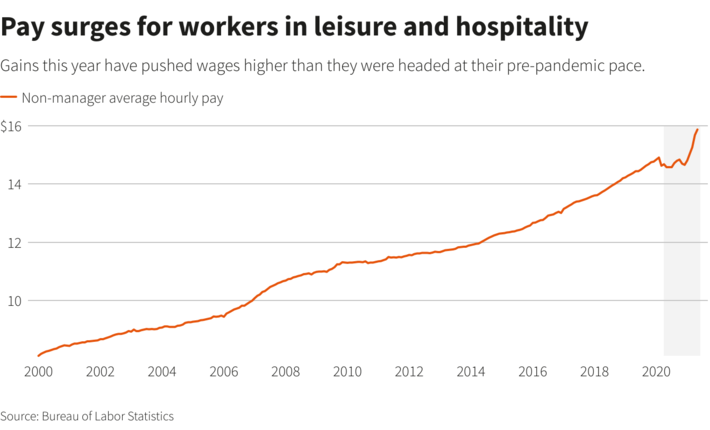
As the US continues to put Covid in the rearview mirror, another monster is rearing its head ugly head, that of inflation. Americans are now experiencing:
- Price inflation: demand exceeds supply
- Wage inflation: lack of workers to fill job vacancies
Moderate inflation is good. It’s a sign of a healthy economy. The Federal Reserve aims for a 2 percent rate of inflation to maintain job and price stability. Anything over could have adverse effects, especially those in the lower-income brackets.
The Consumer Price Index (CPI) from May 2020 – 2021 rose to 5 percent, while the fuel index climbed over 50 percent. Im old enough to remember the Carter years when inflation rates rose to 12 percent. Are we barreling towards those exact figures?
Covid and its role in driving inflationary numbers
Before Covid, the CPI from Dec 2018 to Dec 2019 was a modest 2.3 percent. Due to a myriad of factors, we are seeing:
- Lumber prices up 67 percent
- Rental car prices up 30 percent
- Uber and Lyft fares up 40 percent
- Menu prices up 6.2 percent
No industry is going to be left unscathed with the dramatic price increases. For the latter two examples, Covid has caused a paradigm shift on how low-skilled and low-wage workers see themselves as vital members of a well-oiled economy.
The dichotomy between the labor and wage shortage camps
Its painfully clear that businesses are having trouble servicing their clientele. Talk to any business owner, and theyll point to a labor shortage. Conversely, minimally skilled workers, many of whom are younger, less likely to have a college degree, and live in poverty, according to the US Census Bureau, argue theres a wage shortage.
Its a tug at the heartstrings situation for both parties. On one side, lack of worker bees can hamper economic recovery forcing these businesses to shut down. On the other, low-skilled workers want better pay and, for some, a seat at the table.
The restaurant industry is known for low margins and high labor costs. Is simply raising wages the answer? Will paying the dishwasher or cashier $15 per hour solve Americas labor shortage crisis?
Stats show that pay for these workers has been rising in recent months.

It’s still too early to tell if this will solve the issue as there are many pandemic-related challenges yet to address. Per the recent job report, it could take these businesses nearly a year to replace these vacancies. Until then, its time for these business owners to take charge and consider technologies that address escalating labor shortages and expenses.
Turning to AI to keep labor costs and prices in check
Improvements in business and society have been happening since the dawn of time. The four industrial revolutions are steam, electricity, computer technologies, and now AI.
AI, the ability for a computer to think and act like a human, has been democratized in recent years, particularly with business applications. In the book Competing In The Age Of AI, the authors state, Every organization should get to work now to digitize and structure its processes, systems, and capabilities to accelerate operational scale, scope, and learning. There is no longer any rationale for waiting. It doesnt matter if your organization is new or old. Ultimately if the virus doesnt get you, your competitors will.
In the past, critics would argue that AI would be coming for our jobs. Now, given the grave situation that the US is facing with inflation and labor, AI-driven tools can be the answer to quell the labor uprising and keep businesses profitable.
Labor shortages go beyond retail and restaurants. We see it affecting transportation, manufacturing, construction, and other industries. Now, with advancements in technology, we see examples of businesses innovating:
- McDonalds testing AI-powered, automated drive-thrus
- Mom n pop Thai restaurant using AI-driven menus
- Graze, AI-driven, self-driving mower
Now, these solutions will not replace the need for humans. It can mitigate the need to hire as many employees where labor represents most of a companys expense at 20-30 percent of gross earnings. If a company keeps its labor costs in check, it wont need to raise its prices, making them competitive in its respective marketplace.
The bottom line
The labor shortage situation goes beyond bumper sticker slogans of expanded unemployment benefits or Americas lack of work ethic. It involves more complex societal issues, including the aging US population, workers choosing other careers, and social justice initiatives. Both business owners and workers have to find mutual ground. America cannot afford to go back to the Carter-era economy.
About the author: Jerry Abiog serves as the Co-Founder and CMO of Standard Insights – an AI as a Service growth marketing platformed headquartered in Fort Myers, FL.
